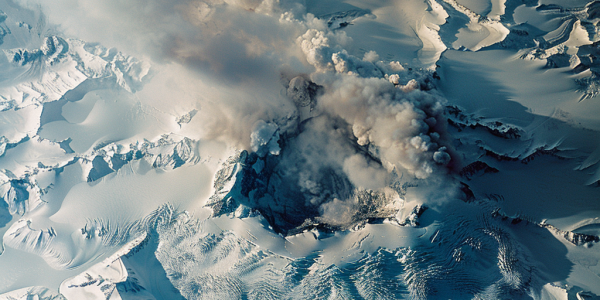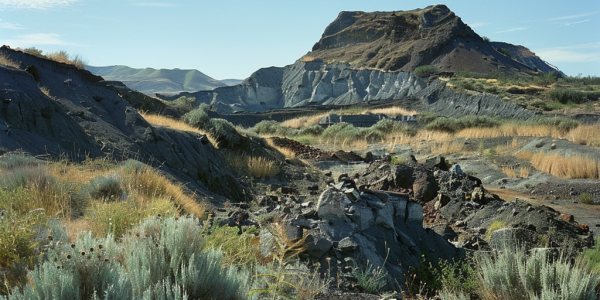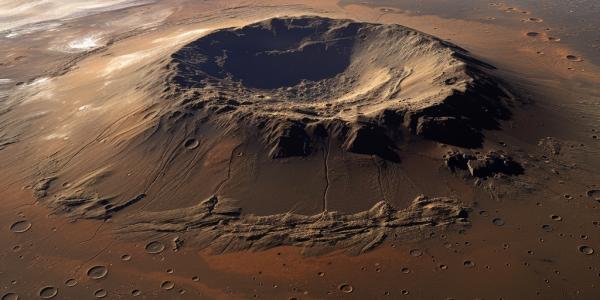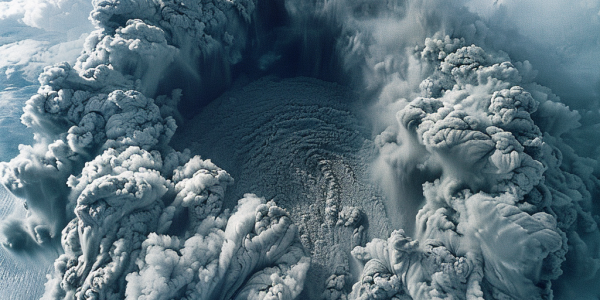Gophers’ Role in Ecological Recovery After Mount St. Helens Eruption Revealed
A groundbreaking study reveals how gophers significantly aided the ecological recovery of Mount St. Helens after its 1980 eruption. Researchers found that these small mammals, through their natural behaviors, helped restore plant life and enhance soil health, leading to a diverse ecosystem over 40 years. This research underscores the vital role of small creatures in environmental recovery and ecosystem dynamics.
Ancient Climate Shift Paved the Way for Dinosaurs’ Dominance
Recent research reveals how the Carnian Pluvial Episode, a significant climatic event 233 million years ago, triggered the rise of dinosaurs and reshaped Earth’s biodiversity. This study highlights the impact of volcanic eruptions on climate and draws parallels to modern climate change, emphasizing the importance of understanding our planet’s history for future ecological challenges.
Glaciers as Indicators: New Research Links Glacier Behavior to Volcanic Eruptions
Recent research reveals a significant link between glaciers and volcanic activity, indicating that faster glacier flow rates near active volcanoes, like Mount Veniaminof in Alaska, could serve as indicators for predicting eruptions. This study emphasizes the importance of monitoring glaciers to provide early warnings for local authorities, potentially enhancing evacuation plans and safety measures. Published in Communications Earth & Environment, the findings highlight the interconnectedness of climate change, glacial dynamics, and volcanic behavior, underscoring the need for advanced monitoring strategies.
New Study Reveals Link Between Ocean Chemistry and Volcanic Activity in Island Arcs
Recent research reveals significant insights into the relationship between ocean chemistry and volcanic activity in island arcs, highlighting processes that have shaped Earth for two billion years. Conducted by Caltech and UC Berkeley, the study published in the Proceedings of the National Academy of Sciences explores how seawater strontium influences magma formation in island arcs, crucial for understanding Earth’s geological history and tectonic activity.
Ancient Zircon Discovery on Easter Island Challenges Volcanic Activity Understanding
Recent research from Colombia’s Universidad de Los Andes reveals that zircon minerals on Easter Island date back 165 million years, challenging existing geological timelines. Led by geologist Yamirka Rojas-Agramonte, this groundbreaking study suggests a more complex history of volcanic activity and Earth’s mantle dynamics, reshaping our understanding of hotspot volcanoes and their formation.
Unlocking Rare Earth Elements from Extinct Volcanoes for Sustainable Energy
Recent research reveals that extinct volcanoes may contain vast deposits of rare earth elements crucial for sustainable energy technologies like electric vehicles and wind turbines. This groundbreaking study highlights the potential for utilizing ancient volcanic formations to meet the rising demand for these materials, reducing reliance on traditional sources and enhancing global supply chain resilience.
NASA’s Mars Odyssey Orbiter Captures Breathtaking Image of Olympus Mons, Largest Volcano in Solar System
NASA’s Mars Odyssey orbiter captures a stunning image of Olympus Mons, the largest volcano in the solar system. Standing at 17 miles tall and 373 miles wide, this colossal shield volcano on Mars is showcased in all its grandeur. The image reveals the volcano’s caldera at its peak, surrounded by the Martian atmosphere with colorful bands of dust, water-ice clouds, and red dust layers. This unprecedented view offers valuable scientific data for researchers, providing insights into Mars’ geological features and atmospheric conditions.
Tonga’s Volcanic Eruption Sparks New Research into Long-Term Climate Impacts
Tonga’s volcanic eruption at Hunga Tonga-Hunga Ha’apai in January 2022 has raised concerns about its long-term climate impacts. Unlike typical eruptions, this event released a massive amount of water vapor into the stratosphere, potentially affecting weather patterns for years to come. A recent study published in the Journal of Climate delves into the implications of this unique eruption and its potential influence on global climate dynamics.
Unfinished Manuscript on Massive Volcanic Eruption Discovered from Michael Crichton’s Legacy
Discover the untold story of Michael Crichton’s unfinished manuscript on a massive volcanic eruption, unearthed by his widow Sherri Alexander Crichton. Explore the legacy of the renowned author whose scientific thrillers captivated audiences worldwide, from genetically-recreated dinosaurs in ‘Jurassic Park’ to the chaos of urban emergency rooms in ‘ER.’
Unique Kīlauea Eruptions Linked to Collapse-Induced Stomp-Rocket Mechanism
Learn about the unique collapse-induced stomp-rocket mechanism behind the explosive eruptions at Kīlauea in Hawaii in May 2018. Researchers used seismic inversions and simulations to study the eruption process, revealing valuable insights into the complex dynamics of volcanic activity.










